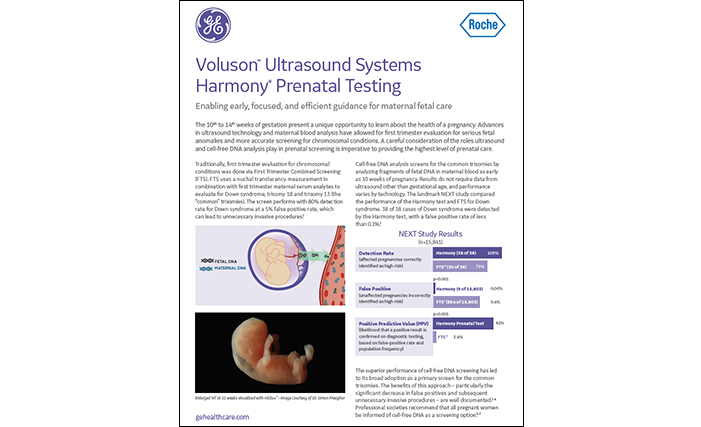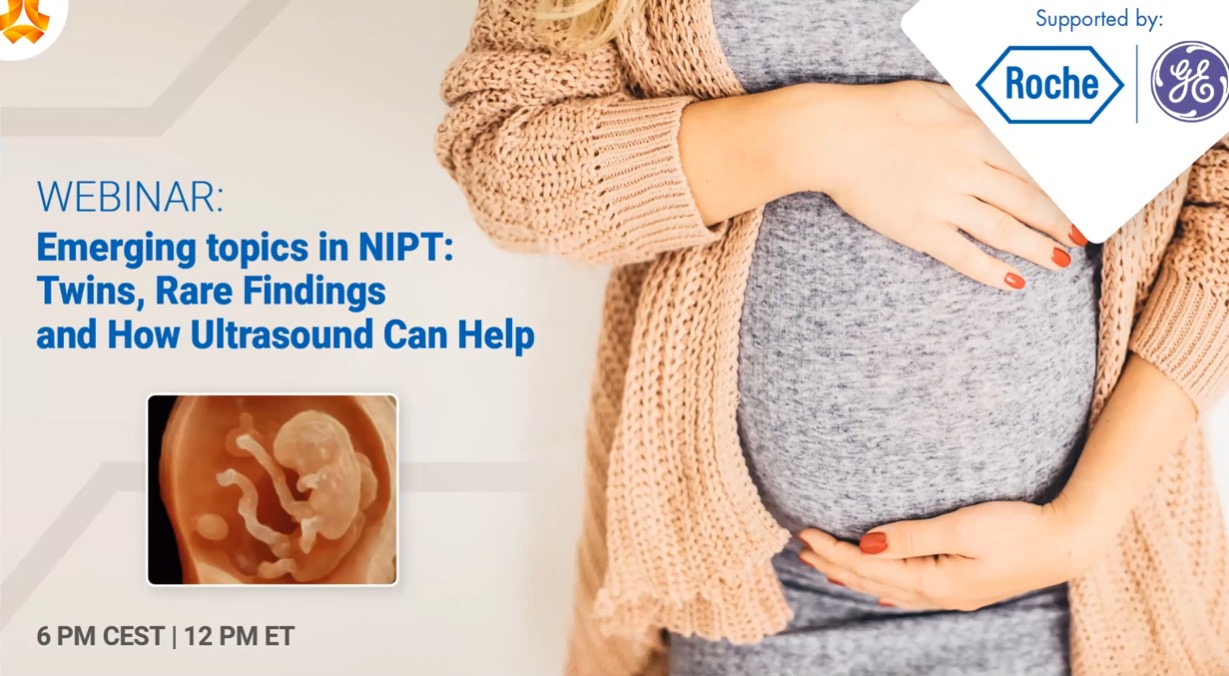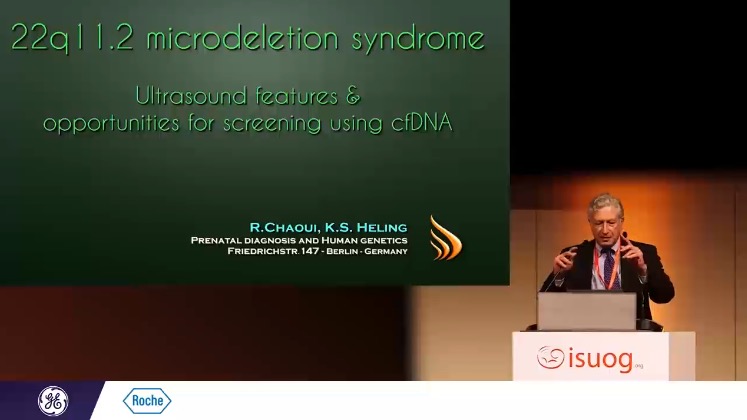A synergistic approach to prenatal screening
Cell-free DNA Analysis and First Trimester Ultrasound
The first trimester presents a unique window of opportunity to evaluate for fetal anomalies. Advances in ultrasound technology and maternal blood analysis via cell-free DNA (cfDNA) testing have allowed for improved first trimester (FT) evaluation for serious fetal anomalies and more accurate screening for chromosomal conditions compared to first trimester combined screening (FTCS).1
The Voluson™ ultrasound and Harmony® prenatal test are science-backed technologies that complement one another and enable focused and efficient guidance for maternal and fetal care.
Hear what these maternal-fetal medicine key opinion leaders (KOLs) have to say about NIPT + Ultrasound
KOLs from around the world came together at the International Society of Ultrasound in Obstetrics and Gynecology (ISUOG) meeting in 2019. Hear what these KOLs have to say about the combined value of ultrasound and NIPT in this exclusive interview.
Empowering exceptional maternal-fetal care with NIPT + Ultrasound
The Harmony prenatal test has demonstrated superiority to first trimester combined screening (FTCS) for trisomy 21 with a significantly lower false-positive rate and higher detection rate across age categories.3
However, cfDNA testing should not replace the first trimester (FT) ultrasound evaluation of a fetus but should complement it. FT ultrasound allows the detection of fetal anomalies that can be in isolation or with maternal/fetal genetic disease.4 Identification of ultrasound anomalies can guide pregnancy management, allowing you to provide the highest level of prenatal care to patients.
Learn how you can gain accurate insights with the combined use of NIPT and ultrasound in first-trimester screening.

Benefits of screening with Voluson ultrasound and the Harmony test2
- Excellent detection of rare and common trisomies as well as fetal structural abnormalities
- Low false-positive rates, leading to a reduction in unnecessary anxiety and follow-up testing
- Less complicated protocol than the contingent screening model, with almost all patients getting clear results from the first blood draw
Emerging topics in NIPT: Twins, Rare Findings and How Ultrasound Can Help
Twin pregnancies are at higher risk for complications. A combination of NIPT and ultrasound can enable efficient, accurate and early identification of the most common issues of clinical importance.
Hear fetal-medicine experts discuss evidence-based approaches to the management of twins using targeted NIPT and ultrasound, and how the emerging data is driving change in the professional society guidelines.
Learn more about first trimester screening in twin pregnancies using Harmony NIPT and ultrasound.
Early screening and diagnosis of 22q11.2 deletion can help guide pregnancy management
22q11.2 deletion is the most common chromosomal microdeletion,5 occurring in as many as 1 in 1000 pregnancies.6 First-trimester identification of at-risk pregnancies enables early confirmatory testing and can direct pregnancy management toward optimized care.
Strategic use of targeted cell-free DNA analysis and detailed ultrasound can enable early identification of fetuses at risk and allow informed management for improved outcomes.
Dr. Rabih Chaoui from the Center for Prenatal Diagnosis and Human Genetics in Berlin, Germany explains how combined ultrasound and cfDNA screening can be used to screen for 22q11.2 microdeletion.
Learn more about screening for 22q11.2 deletion with ultrasound and non-invasive prenatal testing.
References
- Kagan et al. Ultrasound Obstet Gynecol. 2018 Apr;51
- Kagan et al. Arch Gynecol Obstet. 2016;294(2):219-224
- Norton et al. N Engl J Med. 2015 Apr 23;372(17):1589-97
- Salomon et al. Ultrasound Obstet Gynecol. 2013 Jan;41(1):102-13
- McDonald-McGinn DM, Emanuel BS, Zackai EH. 22q11.2 Deletion Syndrome. 1999 Sep 23
- Grati et al. Prenat Diagn. 2015 Aug;35(8):801-9.
© 2020 Roche Diagnostics, Inc. All Rights Reserved.
© 2020 General Electric Company – All rights reserved. GE, GE Monogram, Voluson, and HDlive are trademarks of General Electric Company. GE Healthcare, a division of General Electric Company. GE Medical Systems, Inc., doing business as GE Healthcare. All other third party trademarks are the property of their respective owners.



